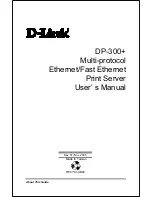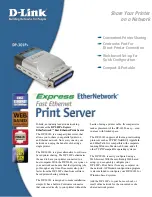
problem
booting
from
the
disk
drive.
Another
option
is
to
use
the
Select
Boot
Options
function
in
the
SMS
menu
to
set
up
the
network
adapter
that
is
connected
to
the
NIM
server
for
a
one-time
boot
of
standalone
diagnostics.
NIM
Server
Configuration
Refer
to
the
“Advanced
NIM
Configuration
Tasks”
chapter
of
the
AIX
Installation
Guide
and
Reference
,
for
information
on
doing
the
following:
v
Registering
a
client
on
the
NIM
server
v
Enabling
a
client
to
run
diagnostics
from
the
NIM
server
To
verify
that
the
client
system
is
registered
on
the
NIM
server
and
the
diagnostic
boot
is
enabled,
run
the
command
lsnim
-a
Cstate
-Z
ClientName
from
the
command
line
on
the
NIM
server.
Refer
to
the
following
table
for
system
responses.
Note:
The
ClientName
is
the
name
of
the
system
on
which
you
want
to
run
standalone
diagnostics.
System
Response
Client
Status
#name:Cstate:
ClientName:diagnostic
boot
has
been
enabled:
The
client
system
is
registered
on
the
NIM
server
and
enabled
to
run
diagnostics
from
the
NIM
server.
#name:Cstate:
ClientName:ready
for
a
NIM
operation:
or
#name:Cstate:
ClientName:BOS
installation
has
been
enabled:
The
client
is
registered
on
the
NIM
server
but
not
enabled
to
run
diagnostics
from
the
NIM
server.
Note:
If
the
client
system
is
registered
on
the
NIM
server
but
Cstate
has
not
been
set,
no
data
will
be
returned.
0042-053
lsnim:
there
is
no
NIM
object
named
"ClientName"
The
client
is
not
registered
on
the
NIM
server.
Client
Configuration
and
Booting
Standalone
Diagnostics
from
the
NIM
Server
To
run
standalone
diagnostics
on
a
client
from
the
NIM
server,
do
the
following:
1.
Stop
all
programs
including
the
AIX
operating
system
(get
help
if
needed).
2.
If
you
are
running
standalone
diagnostics
in
a
full
system
partition,
verify
with
the
system
administrator
and
system
users
that
the
system
unit
can
be
shut
down.
Stop
all
programs,
including
the
AIX
operating
system.
Refer
to
the
AIX
operating
system
documentation
for
shutdown
command
information.
Verify
with
the
system
administrator
and
system
users
using
that
partition
that
all
applications
on
that
partition
must
be
stopped,
and
that
the
partition
will
be
rebooted.
Stop
all
programs
on
that
partition,
including
the
operating
system.
3.
If
you
are
in
a
full
system
partition,
power
on
the
system
unit
to
run
standalone
diagnostics.
In
a
partitioned
system,
reboot
the
partition
to
run
standalone
diagnostics.
4.
When
the
keyboard
indicator
is
displayed
(the
word
keyboard
on
an
HMC
virtual
terminal
window),
press
the
number
1
key
on
the
keyboard
to
display
the
SMS
menu.
5.
Enter
any
requested
passwords.
6.
Select
Setup
Remote
IPL
(Initial
Program
Load)
.
7.
Enter
the
client
address,
server
address,
gateway
address
(if
applicable),
and
subnet
mask.
8.
If
the
NIM
server
is
set
up
to
allow
pinging
from
the
client
system,
use
the
ping
utility
in
the
RIPL
utility
to
verify
that
the
client
system
can
ping
the
NIM
server.
Under
the
ping
utility,
choose
the
network
adapter
that
provides
the
attachment
to
the
NIM
server
to
do
the
ping
operation.
If
the
ping
returns
36
Eserver
pSeries
655
Installation
Guide
Summary of Contents for pseries 655
Page 1: ...pSeries 655 Installation Guide SA38 0616 03 ERserver...
Page 2: ......
Page 3: ...pSeries 655 Installation Guide SA38 0616 03 ERserver...
Page 14: ...xii Eserver pSeries 655 Installation Guide...
Page 22: ...6 Eserver pSeries 655 Installation Guide...
Page 54: ...38 Eserver pSeries 655 Installation Guide...
Page 101: ...2 1 1 Top of Cassette 2 Handle Chapter 4 Installation and Removal Procedures 85...
Page 125: ...1 Metal EMC Shield 2 Adapter Bracket Chapter 4 Installation and Removal Procedures 109...
Page 128: ...112 Eserver pSeries 655 Installation Guide...
Page 132: ...116 Eserver pSeries 655 Installation Guide...
Page 156: ...140 Eserver pSeries 655 Installation Guide...
Page 204: ...188 Eserver pSeries 655 Installation Guide...
Page 211: ......
Page 212: ...Part Number 80P3836 Printed in USA February 2004 SA38 0616 03 1P P N 80P3836...
















































